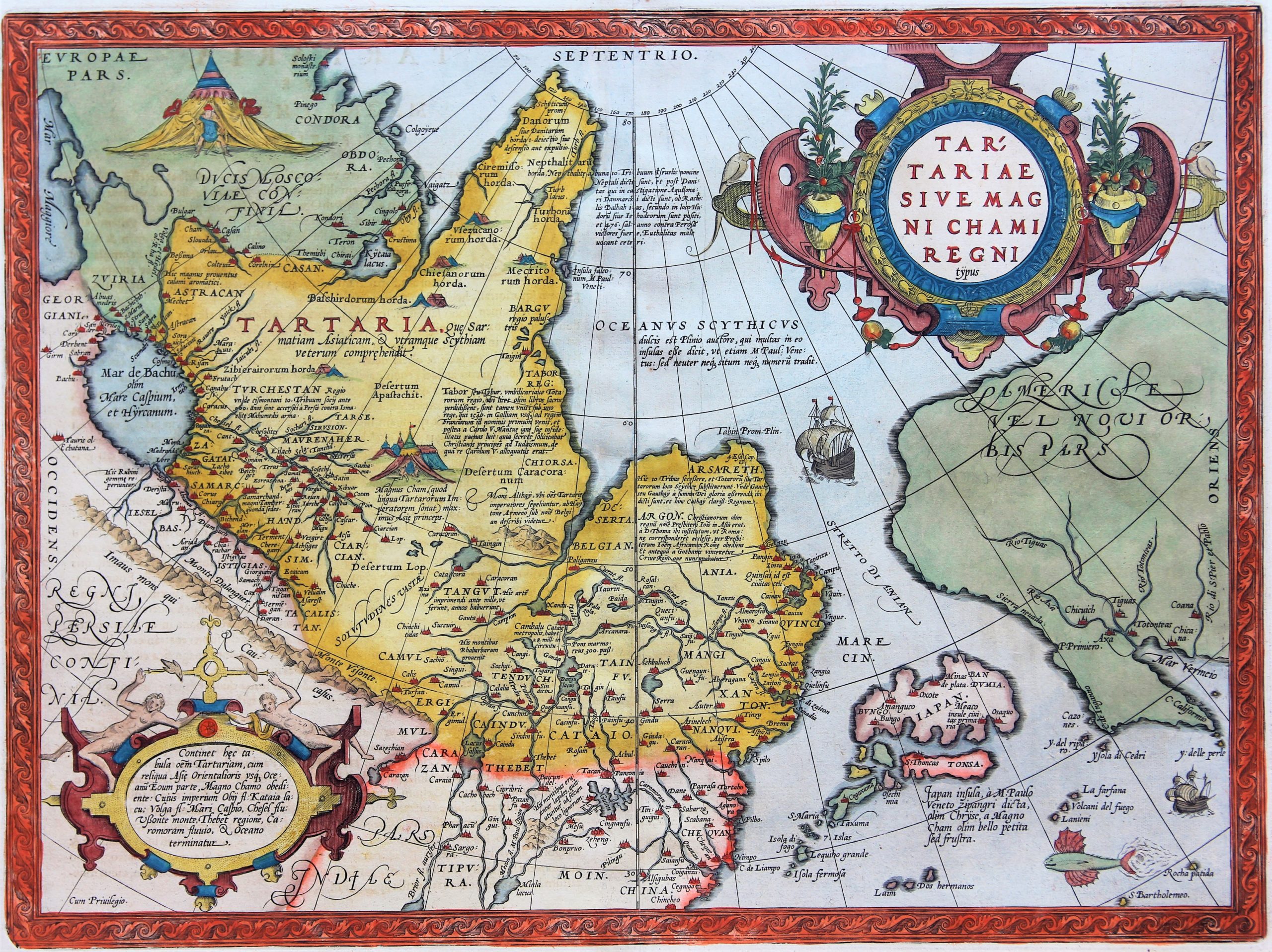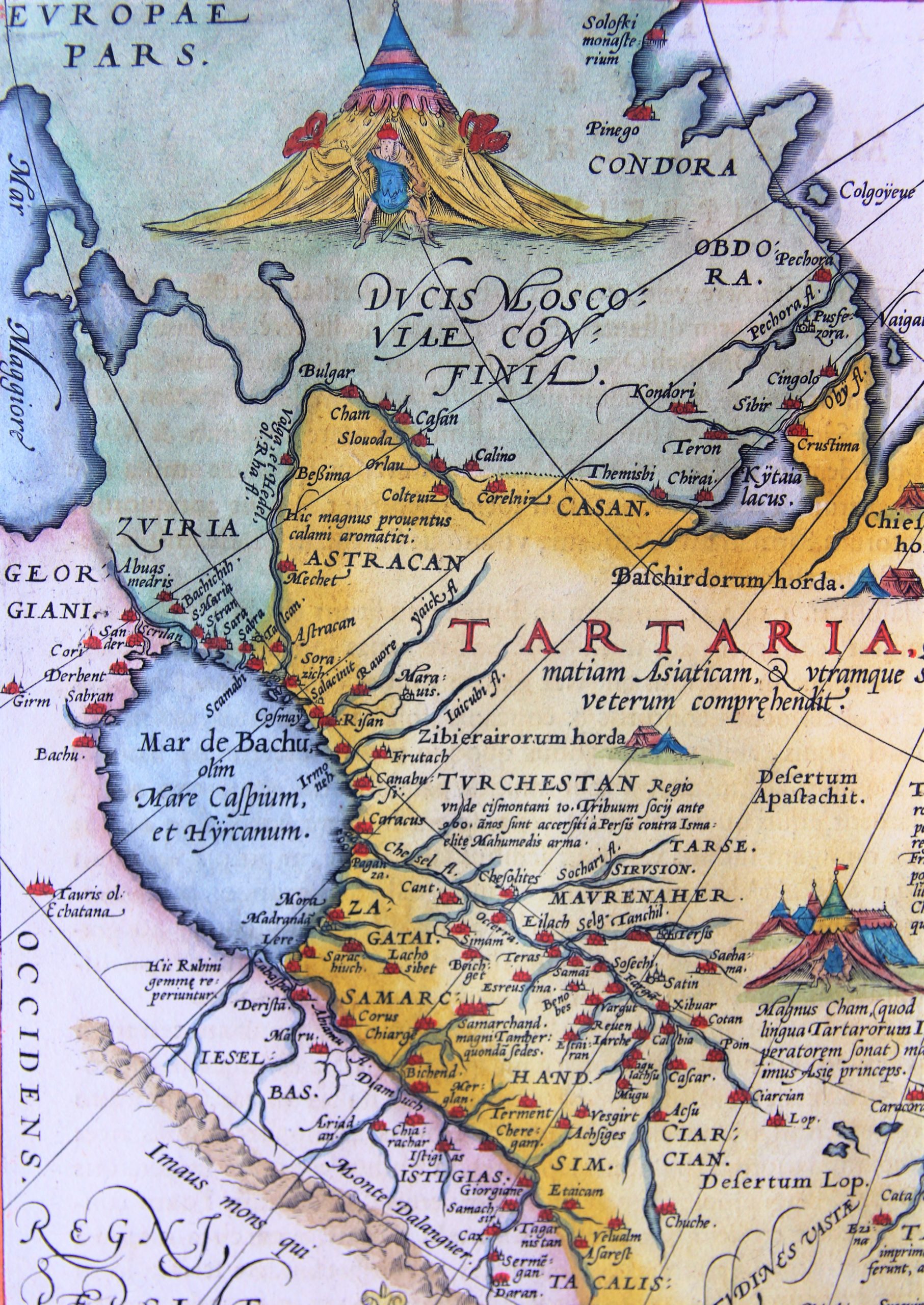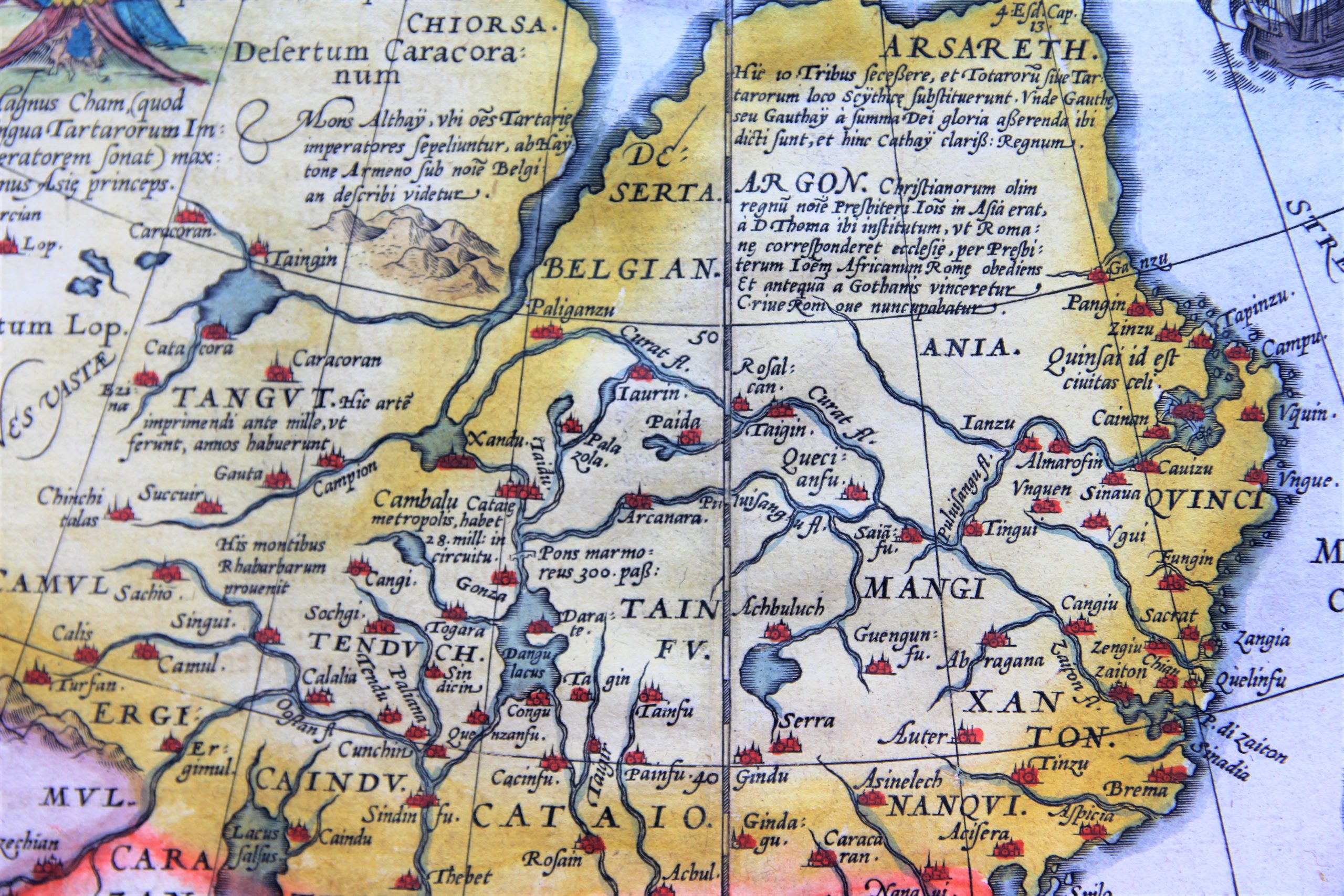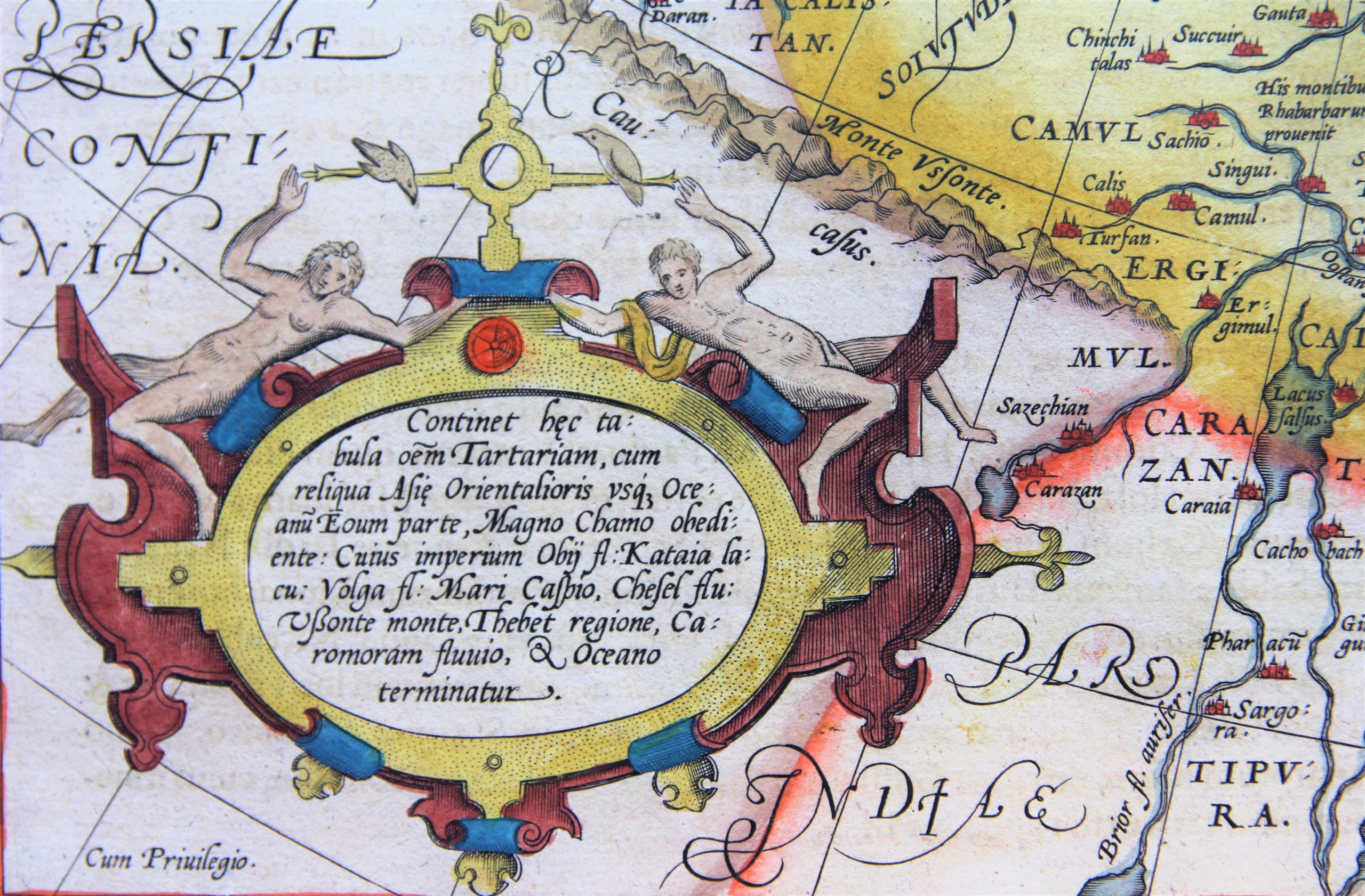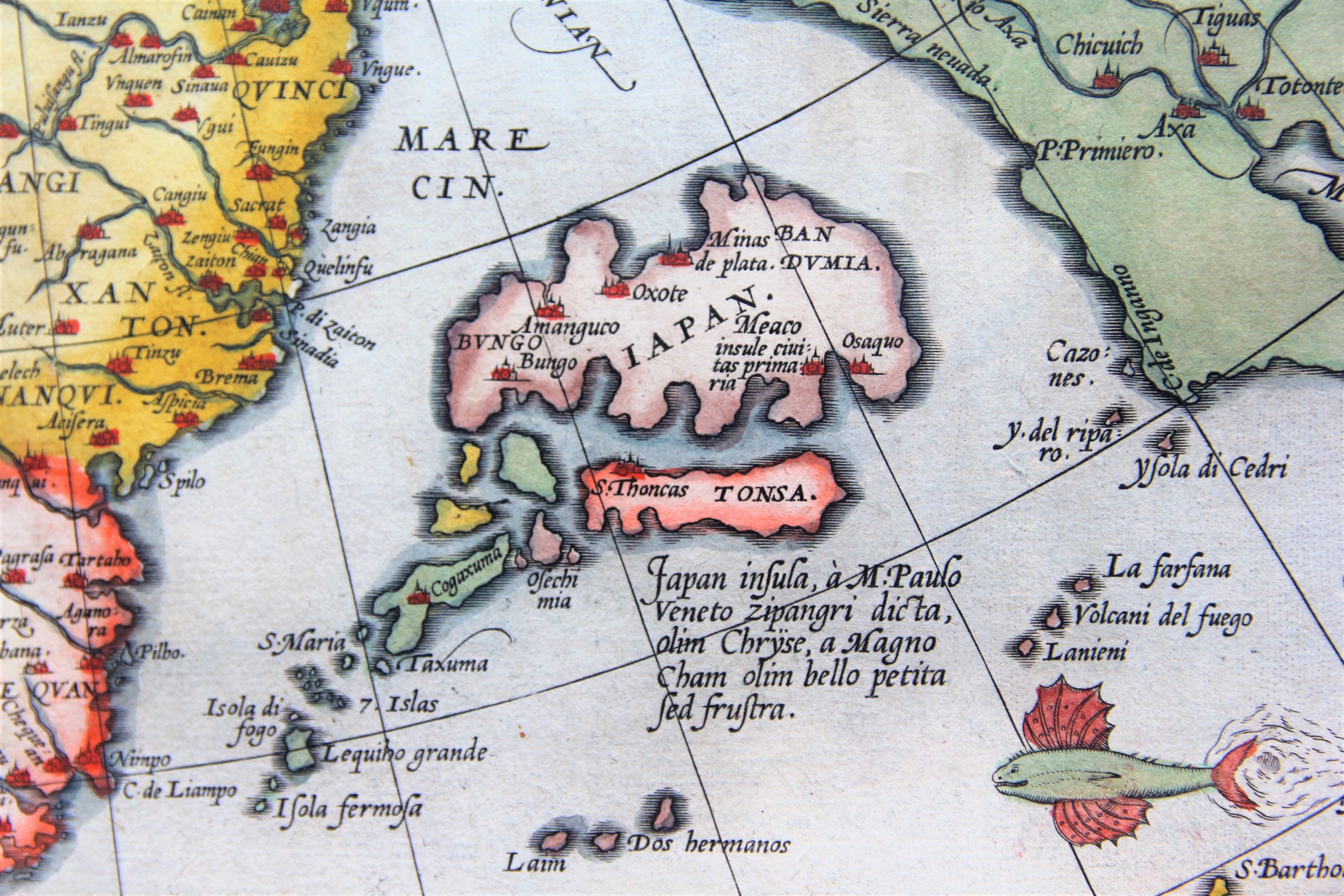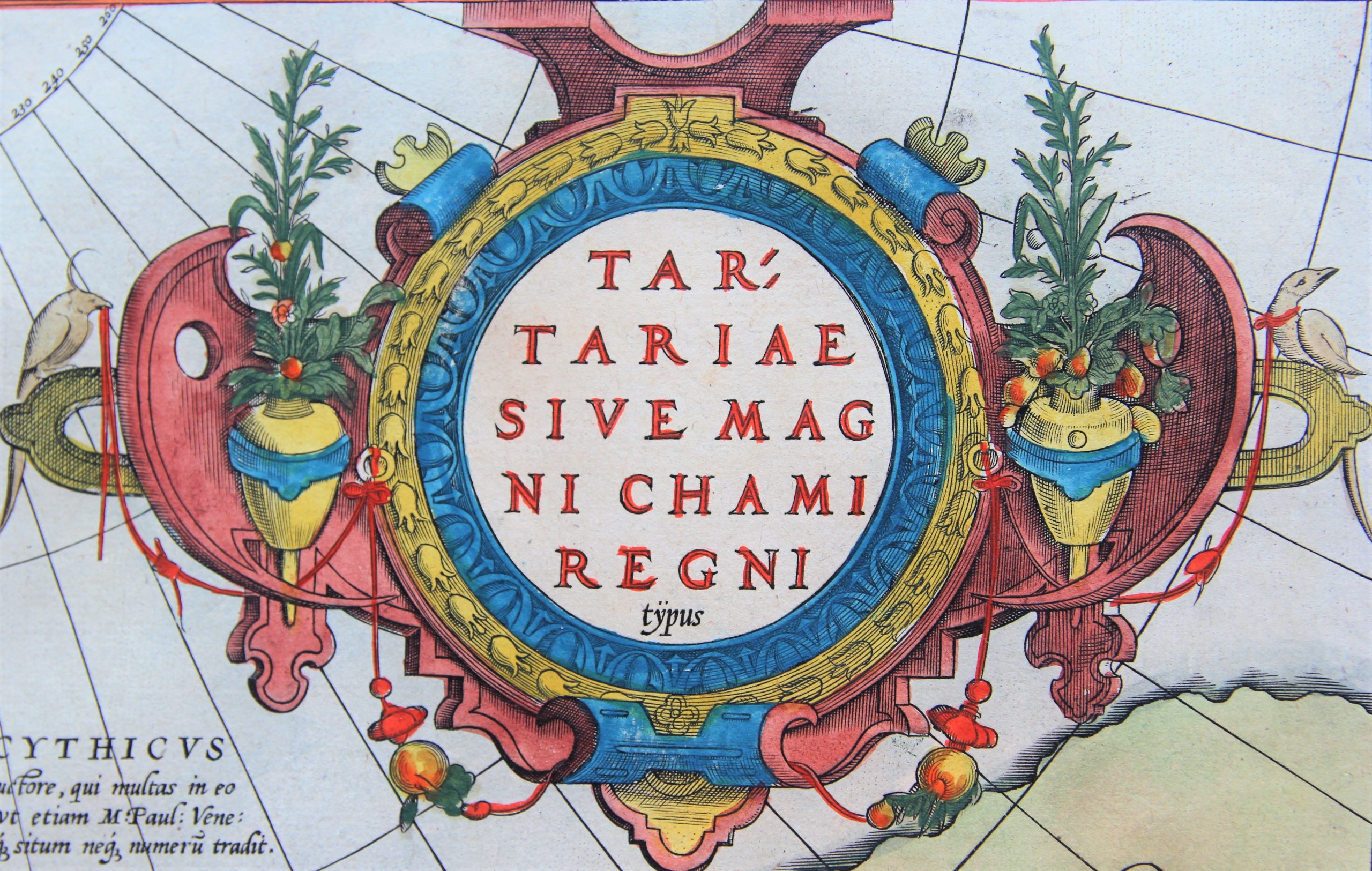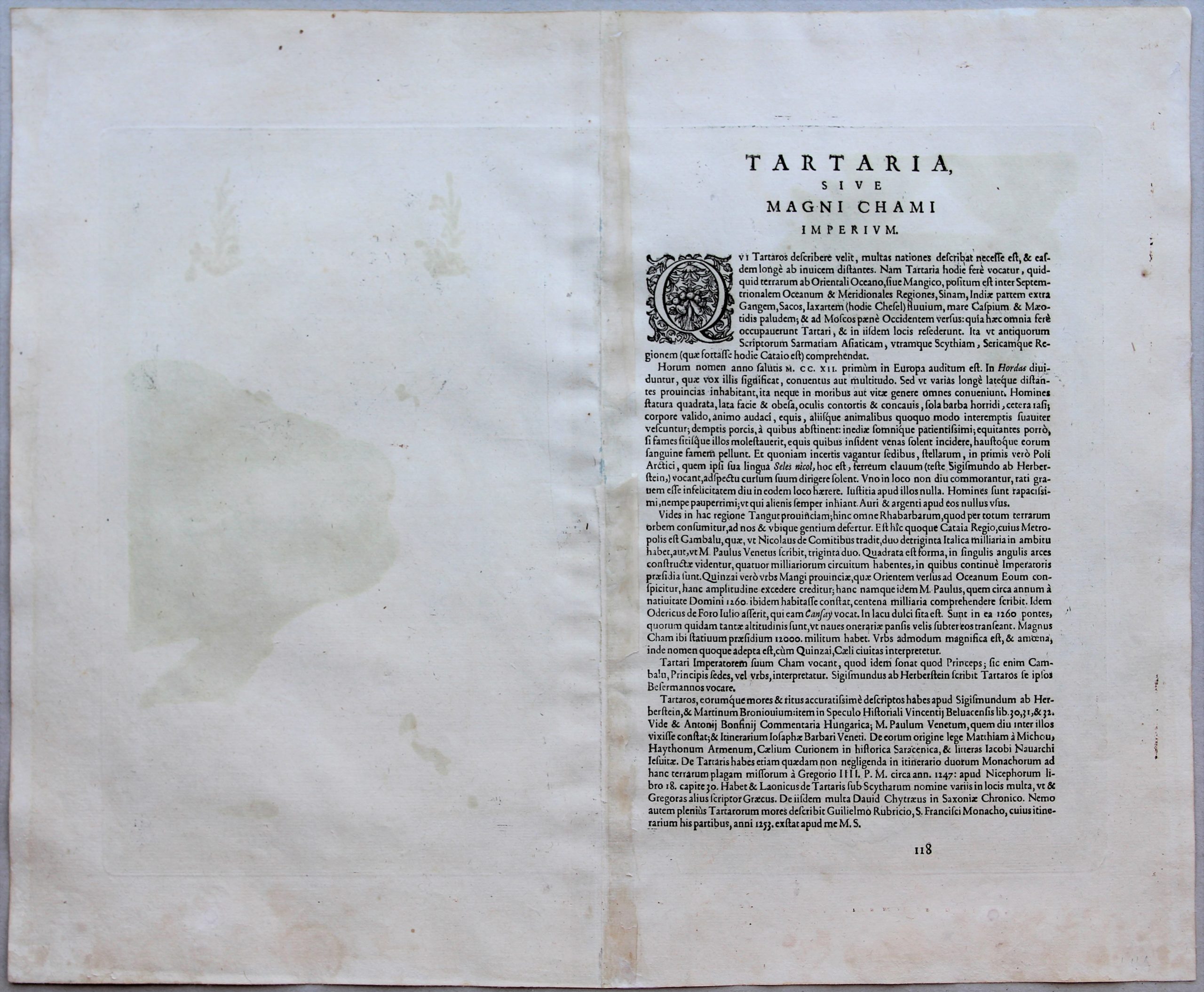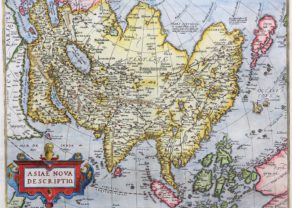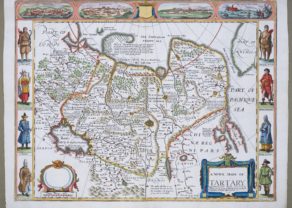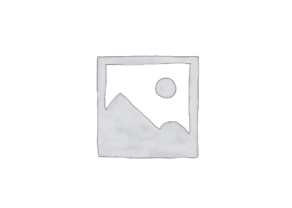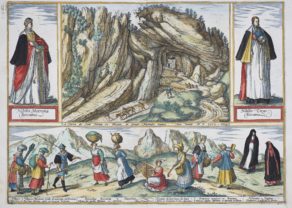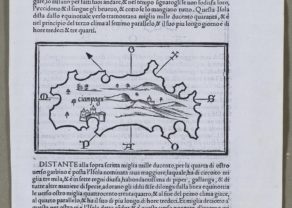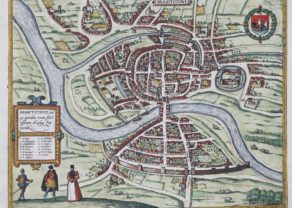Tartary – Tartariae sive Magni Chami regni
Detail
Date of first map: 1570
Date of this map: 1609
Dimensions (without margins): 35 x 47 cm
Dimensions (with margins): 48 x 56 cm
Condition: Very good. Sharp copper engraving. Centre fold as published, flattened. Very wide margins.Old coloured. A few professional repairs in the margins, not affecting the map.
Condition rating: A+
Verso: text in Latin
Map reference: van der Krogt 8050:31; van den Broecke 163
From: Theatrum Orbis Terrarum; van der Krogt 31:054 page 118
In stock
Tartary by Ortelius
This map covers a large section of Asia (Tartary, China and Japan) as well as the the west coast of North America,
It is the earliest obtainable map to name California and is one of the first to include the Strait of Anian, which separates North America and Asia.
The map provides a remarkable representation of what was then the Tartar Kingdom, extending from the Caspian Sea in the west, to China, Japan and Russia in the east. Taiwan is included, labeled as Isla Fermosa. The map also offers an intriguing treatment of the northwest coast of America, California, and what is today the American Southwest. Japan is shown horizontally, a typical depiction of the archipelago at the time.
As with many of the maps which made up Ortelius’ popular atlas, this map was innovative for its time. Perhaps its greatest innovation was the early adoption of the Strait of Anian, today the Bering Strait. Anian derives from Ania, a Chinese province on a large gulf mentioned in Marco Polo’s travels (ch. 5, book 3). The gulf Polo described was actually the Gulf of Tonkin, but the province’s description was transposed from Vietnam to the northwest coast of North America. The first map to do so was Giacomo Gastaldi’s world map of 1562, followed by Zaltieri and Mercator. The Strait then became shorthand for a passage to China, i.e. a Northwest Passage. It appeared on maps until the mid-eighteenth century.
Two distinctive cartouches are in opposite corners (bottom left and top right) and showcase the strapwork style typical of Ortelius’ atlas maps. To the upper right, the title is surrounded by an elaborate frame, vases of flowers, and exotic birds. To the bottom left, a man and a woman sit astride the cartouche’s frame, seemingly reading the Latin inscription which translates to:
This map contains the area of Tartaria, with the remaining part of East Asia to the Morning Ocean, subject to the great Khan whose might is bounded by the river Ob, Lake Kataia, the Volga, the Caspian Sea, the river Chesel, the mountains of Usson, the area of Tibet, the river Caromora and the Ocean.
Beyond the cartouches, other decorative elements include two ships sailing at sea and a large fish with huge fins. Although North America is relatively empty of toponyms, Asia is thick with place names and details, including several vignettes. A huge tent fills much of Moscovie, for example, with a large man fitted out for battle emerging from the flap.
Many blocks of text, in Latin, also adorn the map. For example, in the far northeast of Tartary there is a note that states:
The Nephalites are named Neptali after one of the 10 tribes with a Hebrew name, and after the Danites, who by way of punishment were called the Danes of the dark North, and they were on account of the claims of Rachel Balbah placed to the side, in the area of the Hudores or Iehudeores; in the year 476 they were victorious in their battle against Perosa. Others call them incorrectly Euthalites.
In the north Pacific:
The Scythian ocean, according to Plinius, has sweet water, and he also says it contains many islands, as M. Paulus [Marco Polo] also says, but neither of the two tells about their number or location.
In the center of Tartary is another tent, with an imposing figure exiting via the flap. The text says:
The great Khan (which in the language of the Tatars means emperor), the highest ruler of Asia.
In the east of Tartary:
Argon. Once there was in Asia a Christian kingdom, known to Prester John, and D. Thomas founded it [this city] in this place, so that it was in contact with the church of Rome, and was subjected to Rome through Prester John of Africa. Before it was defeated by the Goths, it was known as Crive Romove.
These text blocks show not only how large a place in the European imagination Tartary and East Asia commanded, but they also reveal some of the source Ortelius used to compile his maps. He mentions Prester John with reference to Argon and a lost Asian Christian Kingdom. Since at least the twelfth century, Prester John was thought to rule over a Christian Kingdom. At first, scholars thought this kingdom was located in India but, over time—Prester John was popular in European chronicles from the twelfth to the seventeenth centuries—his supposed location migrated to Central Asia and then Ethiopia.
Another source is Marco Polo, the famed thirteenth-century traveler. A Venetian merchant, Polo supposedly journeyed across Asia. His adventures, many of them apocryphal, were recorded in ca. 1300. They were copied and later printed many times over and were a favorite source on Asia for European mapmakers into the seventeenth century.
Finally, Ortelius references the Bible, always an important source for European mapmakers. The many writings, many dating from the Middle Ages, which attempted to locate Biblical events, like the migration of the Ten Lost Tribes of Israel, were utilized by Ortelius and his contemporaries. Other important sources were Ortelius’ own 1564 world map, his 1567 map of Asia, and Gastaldi’s map of Asia of 1561.
